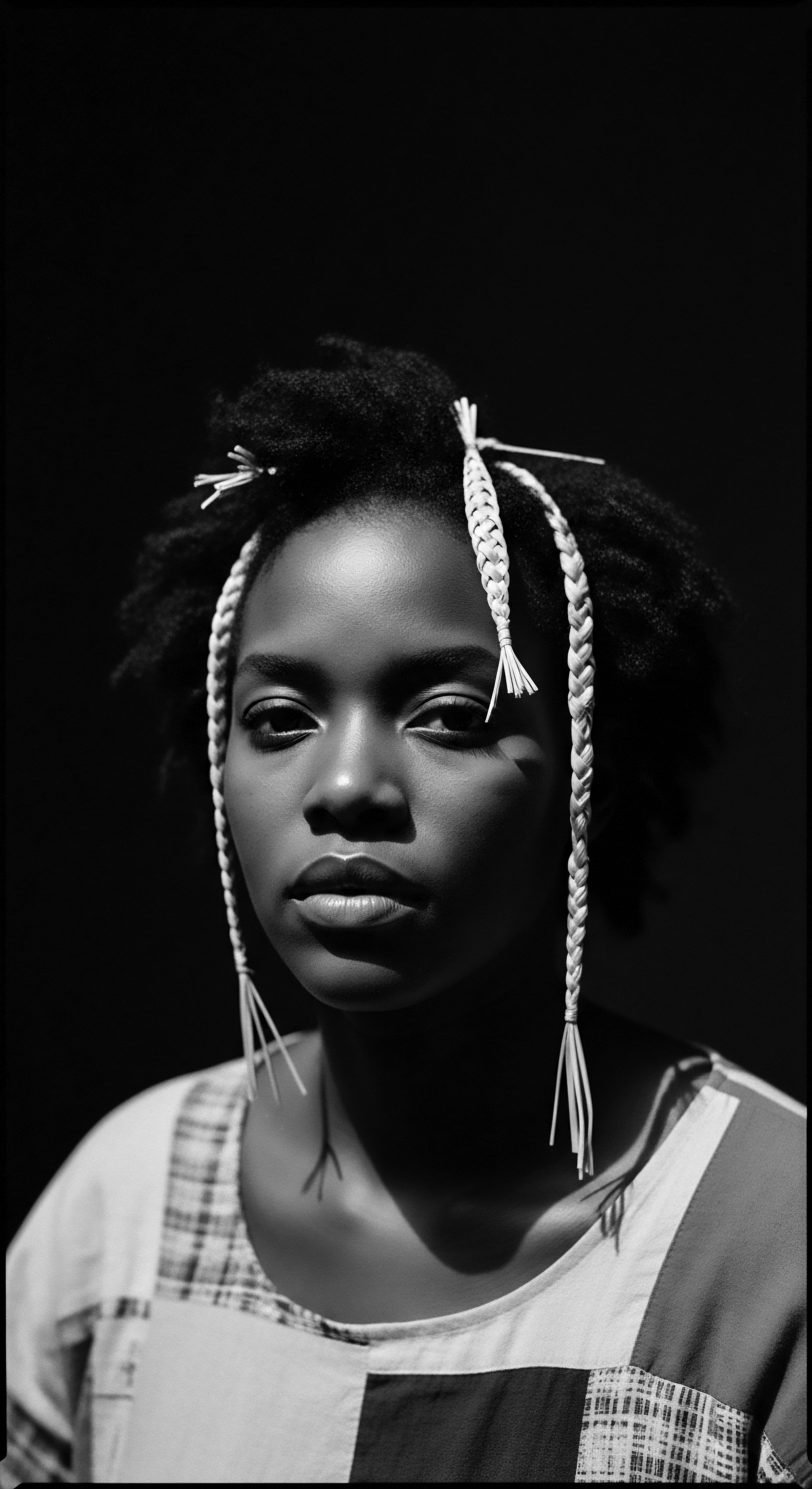
Fundamentals
The history of hair coverings is a deeply layered account, far more than a mere chronicle of textiles worn upon the head. It represents a living archive of human expression, protection, and identity across civilizations. For Roothea, this exploration centers on the profound significance of hair coverings within the journey of Textured Hair Heritage, particularly for Black and mixed-race communities.
A hair covering, in its simplest sense, is any material or garment placed over the hair and scalp. This fundamental definition expands to encompass a vast array of forms, from the utilitarian to the ceremonial, each imbued with specific meaning and purpose.
Historically, these coverings served immediate, practical functions ❉ shielding the scalp from harsh sun, dust, or cold; maintaining cleanliness; or protecting intricate hairstyles. Beyond practicality, however, lies a rich narrative of cultural communication. Hair, being the most elevated part of the body, often held spiritual importance in ancient societies, considered a conduit for divine connection.
Thus, covering the hair could signify respect, modesty, or a connection to the sacred. The materials employed varied widely, ranging from natural fibers like cotton and silk to more ornate embellishments of beads, shells, and precious metals.

Early Practices and Their Meaning
Across ancient African civilizations, hair was never simply an aesthetic feature. It was a language, a symbol of one’s family background, social standing, spiritual beliefs, tribal affiliation, and marital status. The decision to cover hair, or how it was covered, communicated volumes without uttering a single word.
Hair coverings, in their simplest form, transcend mere adornment, serving as profound statements of identity, protection, and cultural lineage.
In many traditional African societies, head coverings were not universally worn. Instead, hair itself, styled in elaborate ways, often conveyed these social messages. However, when head coverings did appear, particularly in regions like ancient Egypt and Nubia, they often signaled royalty, divinity, or specific ceremonial roles. For instance, pharaohs and high-ranking individuals wore stylized wigs or headdresses, often adorned with precious materials, indicating wealth and a connection to deities.
- Utilitarian Protection ❉ Head coverings shielded hair from environmental elements, such as intense sun, dust, and perspiration, which was especially relevant for agricultural work.
- Status Markers ❉ In many cultures, the style, fabric, or adornment of a head covering could denote social rank, marital status, or age.
- Spiritual Connection ❉ Certain communities viewed hair as a spiritual antenna, and covering it could signify reverence, humility, or a connection to the divine.
The earliest forms of hair coverings, dating back thousands of years, reflect a deep understanding of both practical needs and symbolic expression. These ancestral practices set a precedent for the evolving meanings that hair coverings would acquire over centuries, particularly as textured hair journeys through diverse historical landscapes.
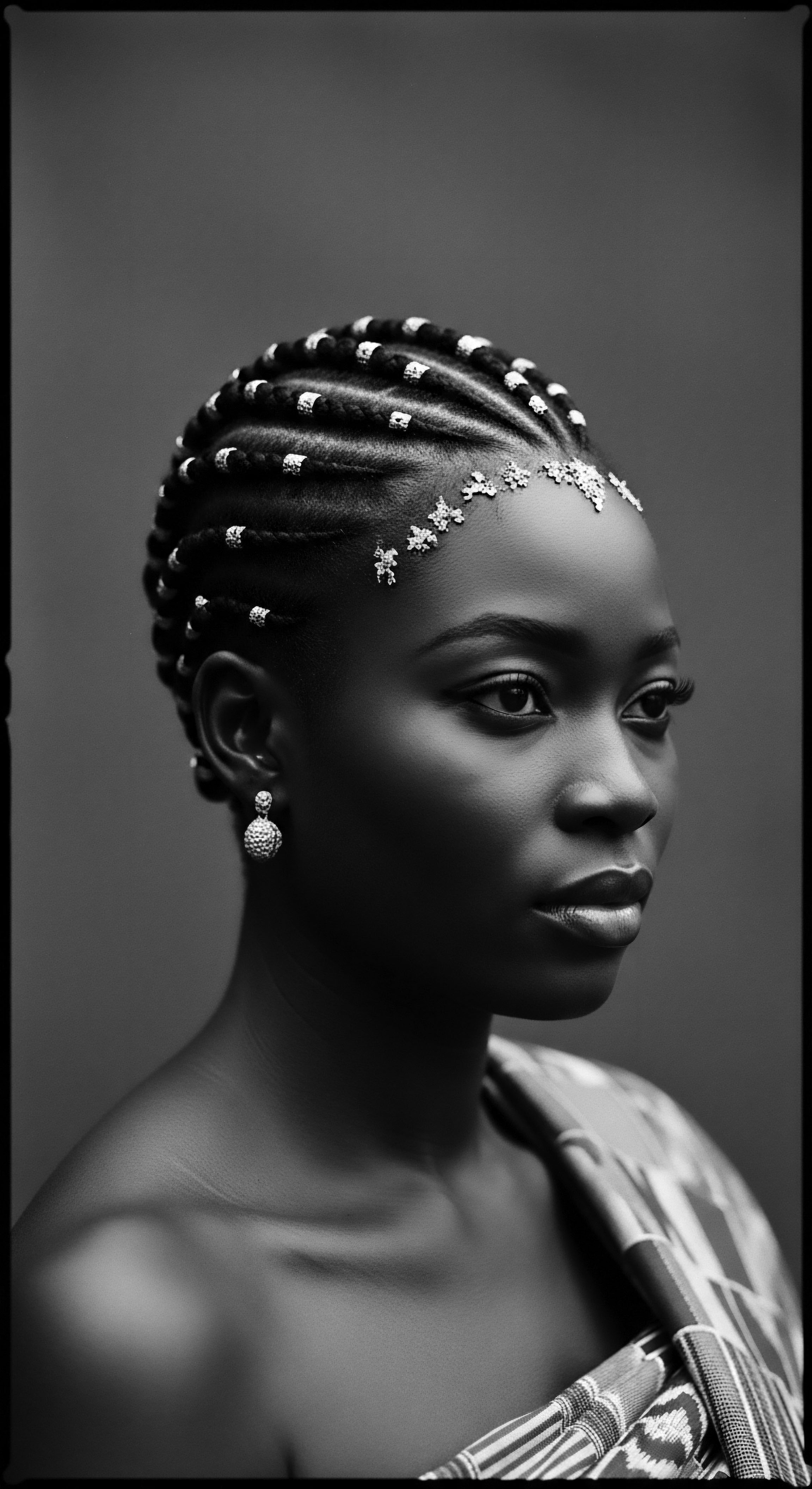
Intermediate
Moving beyond the foundational elements, the intermediate understanding of Hair Coverings History reveals a complex interplay of cultural preservation, forced imposition, and defiant reclamation, especially within the context of textured hair. This historical journey is marked by periods where coverings shifted from markers of honor to symbols of subjugation, only to be re-appropriated as emblems of resilience and pride. The true significance of these coverings cannot be grasped without acknowledging their dual nature ❉ at times a choice, at others a mandate, yet always a reflection of human agency and cultural memory.
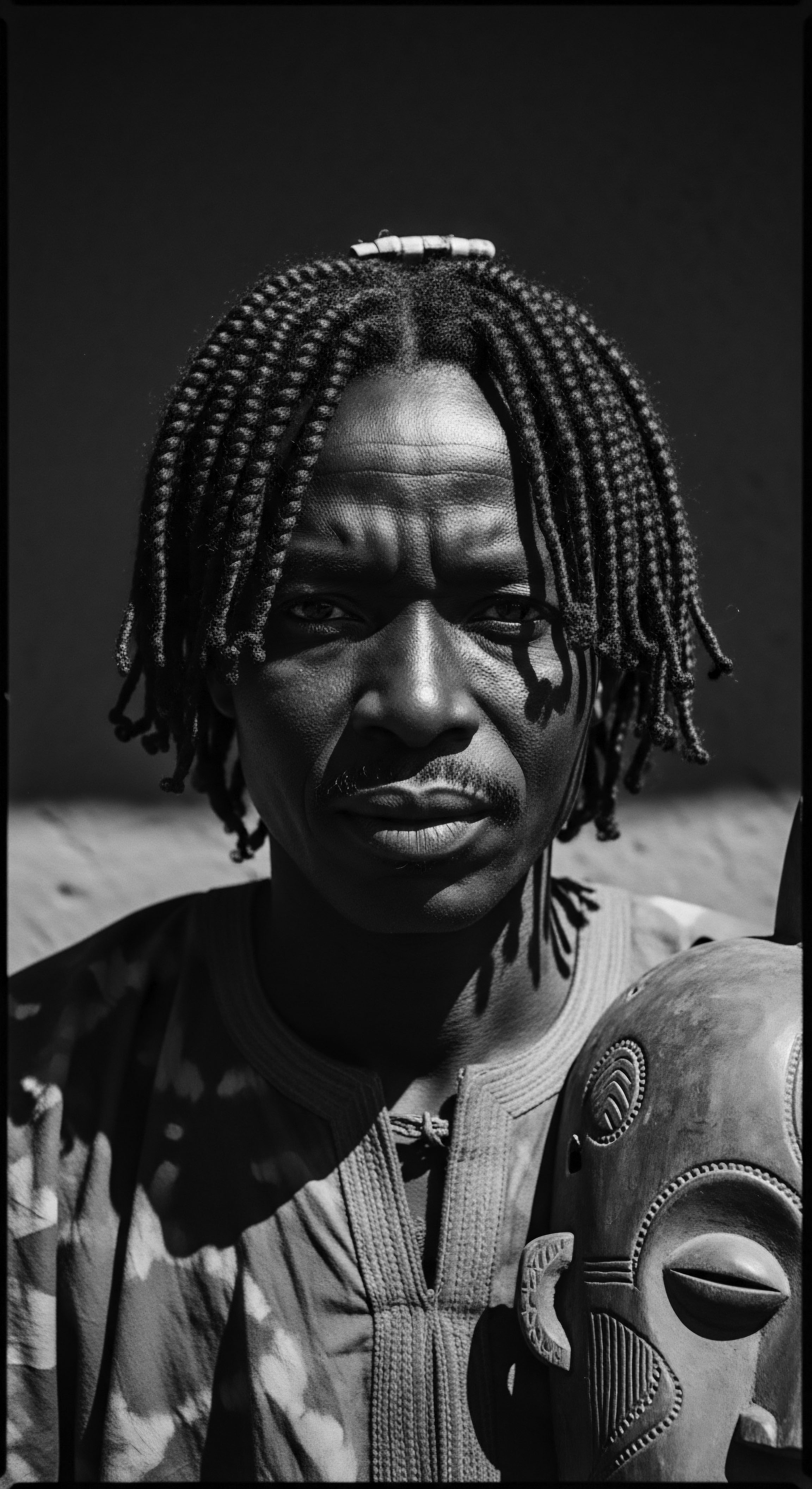
The Transatlantic Shift ❉ From Homeland to Hardship
The transatlantic slave trade fundamentally altered the trajectory of hair coverings for people of African descent. Upon forced arrival in the Americas, enslaved Africans faced a deliberate and dehumanizing process of cultural erasure. One of the initial acts of this process involved shaving the heads of captured individuals, a direct assault on the spiritual and social significance hair held in their homelands. This act aimed to strip away identity and connection to ancestral practices.
As textured hair regrew in new, oppressive environments, access to traditional tools, oils, and communal styling rituals was severely limited. Here, the utilitarian aspect of hair coverings gained immense importance. Simple cloths, often plain cotton kerchiefs, became necessary for protection against harsh labor conditions, sun, sweat, and lice.
These rudimentary coverings were initially imposed by slave owners, intended as a badge of enslavement and a visual marker of lower social standing. For example, South Carolina’s Negro Act of 1735 dictated specific, inexpensive fabrics for enslaved people, restricting their dress, including head coverings.
Hair coverings transformed from ancestral emblems of status into imposed symbols of subjugation, only to be defiantly re-scripted as declarations of enduring spirit.
Yet, within this oppressive framework, a profound act of resistance took root. Enslaved women, with remarkable ingenuity, began to reclaim these forced coverings. They adorned them with vibrant colors, intricate knots, and hidden messages, transforming a symbol of shame into a covert expression of cultural continuity and defiance.
This act of re-appropriation allowed them to maintain a semblance of personal and communal identity, a silent yet potent refusal to yield their inner spirit to external control. The headwrap, in this context, became a “uniform of rebellion,” signifying resistance to the loss of self-definition.
The evolution of the headwrap in the diaspora illustrates a powerful testament to adaptability and cultural preservation. What began as a tool for survival and a symbol of oppression was skillfully manipulated to become a canvas for self-expression and a beacon of heritage.
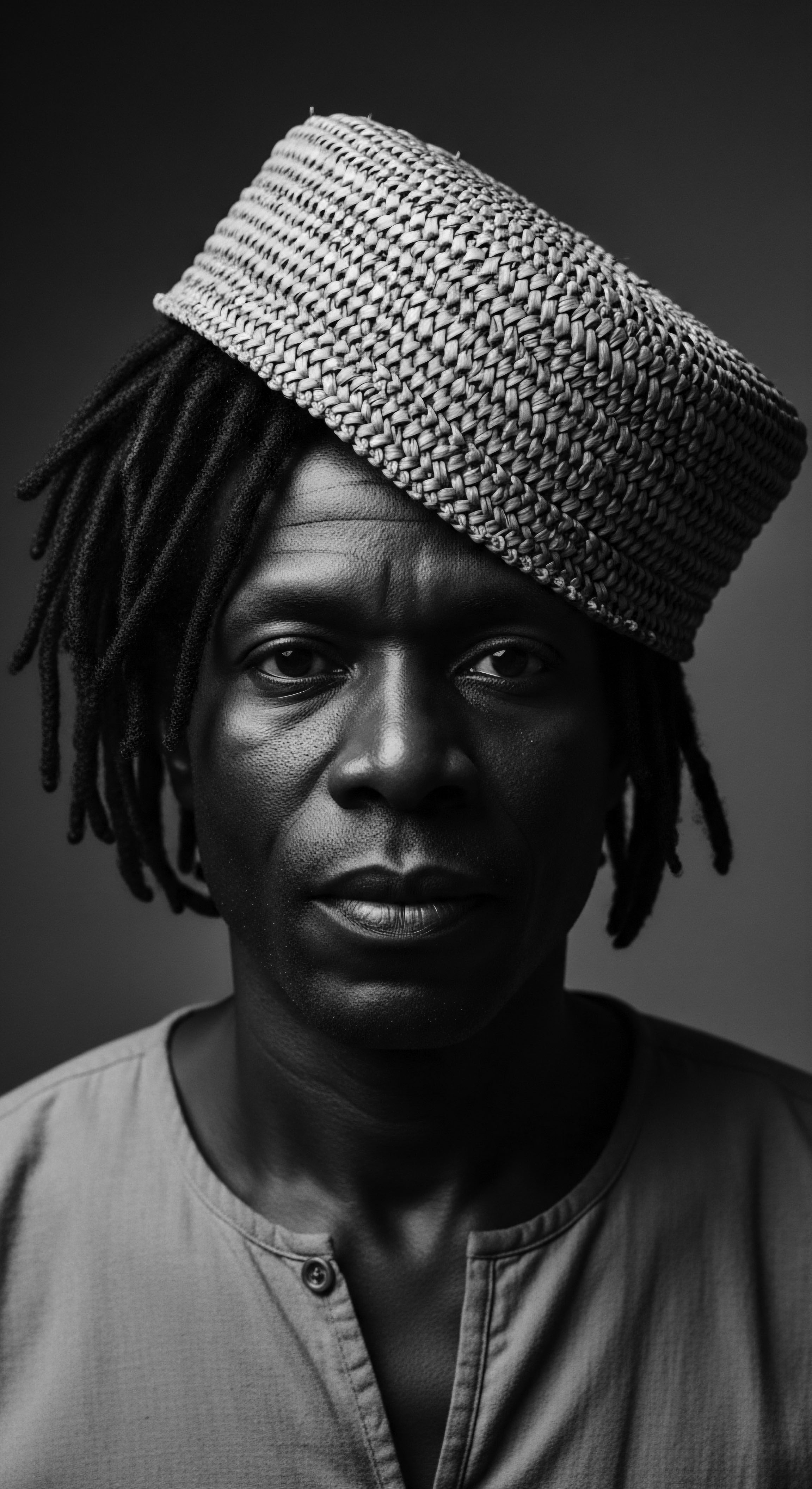
Cultural Adaptation and Reclaiming Identity
The ingenuity extended to the styling itself. Despite restrictive environments, various tying methods and adornments conveyed subtle meanings within enslaved communities, often serving as a form of coded communication. This period also saw the practical application of head coverings in protecting textured hair, which, due to its unique structure, requires specific care to retain moisture and prevent damage from environmental factors.
Consider the historical example of the Tignon Laws in late 18th-century Louisiana. These laws, specifically the “Edict of Good Government” of 1784, mandated that free Black and mixed-race women wear a tignon (kerchief or headwrap) over their hair in public. The intent was clear ❉ to distinguish them from white women and enforce a visible social hierarchy.
However, these resilient women responded by using luxurious fabrics, feathers, and jewels, turning the tignon into an extravagant fashion statement that ironically highlighted their beauty and status, rather than diminishing it. This act of sartorial insurgency speaks volumes about the enduring spirit of self-definition.
| Era/Context Pre-Colonial Africa |
| Primary Function/Meaning Status, spirituality, tribal affiliation, protection from elements. |
| Impact on Textured Hair Heritage Hair as a communication system; communal styling rituals deeply embedded in identity. |
| Era/Context Transatlantic Slave Trade |
| Primary Function/Meaning Forced dehumanization, utilitarian protection, imposed symbol of servitude. |
| Impact on Textured Hair Heritage Cultural erasure attempts; hair coverings become tools of covert resistance and identity preservation. |
| Era/Context Post-Slavery & Jim Crow Era |
| Primary Function/Meaning Stigma (Mammy stereotype), continued practicality, slow reclamation. |
| Impact on Textured Hair Heritage Association with domesticity; gradual re-evaluation as a cultural marker and protective style. |
| Era/Context This table demonstrates the shifting interpretations and persistent cultural significance of hair coverings within the heritage of textured hair. |
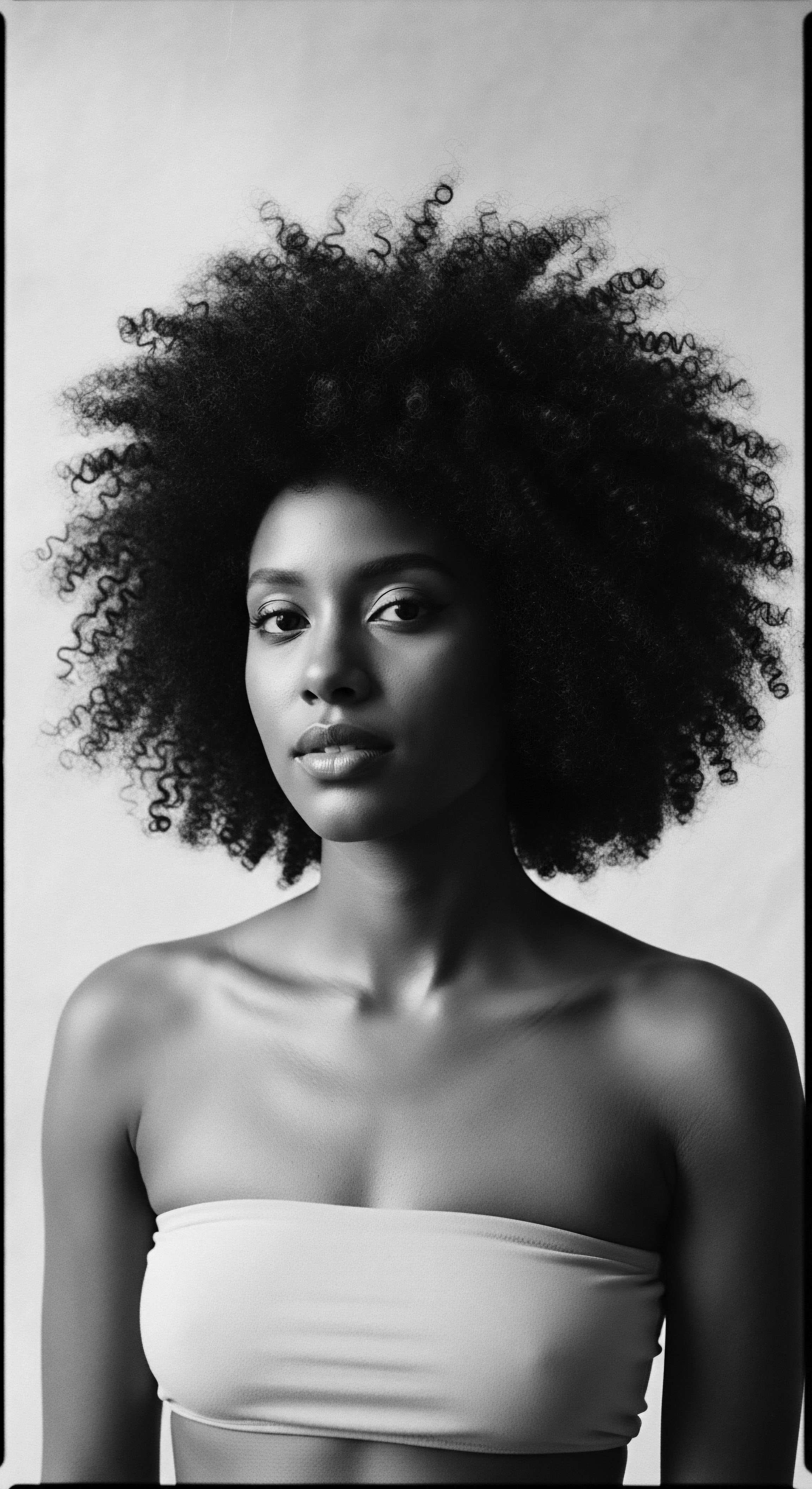
Academic
The academic examination of Hair Coverings History, particularly through the lens of textured hair heritage, reveals a multifaceted cultural phenomenon, a deeply embedded practice whose significance extends beyond mere aesthetics or religious adherence. This area of study necessitates a rigorous, interdisciplinary approach, drawing from cultural anthropology, historical sociology, and the emerging field of hair science as it relates to ancestral practices. The meaning of ‘Hair Coverings History’ is not static; it is a dynamic interplay of power, identity, resistance, and holistic well-being, continually re-negotiated across generations and geographies for individuals with textured hair. It represents a profound cultural language, a testament to resilience, and a living legacy of ancestral wisdom.
At its most granular level, the Hair Coverings History for textured hair delineates the evolution of practices surrounding the adornment, protection, and concealment of coily, kinky, and wavy hair patterns. This delineation is not simply a chronological listing of styles but a critical analysis of the socio-political, spiritual, and physiological rationales underpinning these traditions. From the intricate coiffures of pre-colonial African societies, which communicated complex social codes such as age, marital status, and community standing, to the forced head coverings of the enslaved and their subsequent re-appropriation as symbols of defiance and cultural pride, the trajectory of hair coverings mirrors the broader human experience of adaptation and assertion of self.
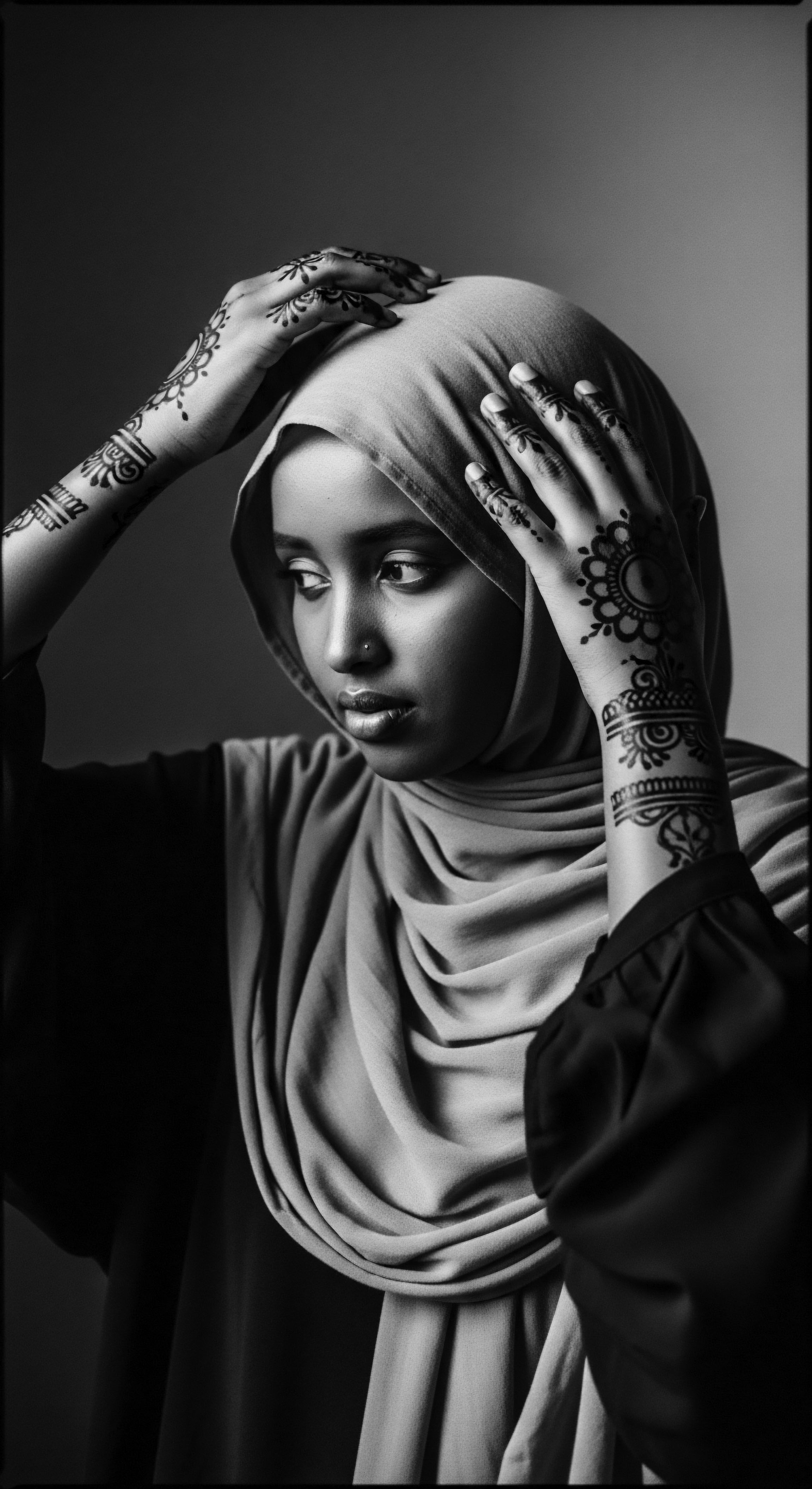
Echoes from the Source ❉ Pre-Colonial Practices and Bio-Cultural Linkages
Before the ruptures of forced migration, hair in many African societies was considered sacred, a conduit to the spiritual realm due to its proximity to the heavens. This reverence translated into meticulous care and elaborate styling, often taking hours or even days, serving as communal rituals that strengthened familial and social bonds. Hair coverings, when worn, were integral to these expressions, signaling everything from a woman’s fertility to her noble lineage. The use of natural materials for both hair adornment and rudimentary coverings speaks to an ancient understanding of elemental biology and environmental adaptation.
Ethnobotanical studies, though still nascent in their focus on African hair care specifically, hint at the sophisticated knowledge systems that informed traditional practices. For instance, the use of certain plant-based ingredients for hair nourishment and scalp health, such as those found in traditional Chebe powder from Chad (Croton gratissimus, Akpi seeds, cloves, rosemary), points to a historical understanding of hair’s biological needs. While not directly a hair covering, the care practices associated with these natural elements underscore the underlying purpose of many coverings ❉ to protect and preserve hair that was painstakingly nurtured. These practices often sought to lock in moisture and strengthen hair roots, a particularly salient concern for textured hair, which is prone to dryness and breakage.
The inherent qualities of textured hair—its unique coiling patterns and natural volume—meant that it responded differently to environmental factors and required specific care regimens. Traditional coverings, whether elaborate ceremonial wraps or simpler daily headties, served as a practical shield against the elements, preventing moisture loss and physical damage, thus validating ancient wisdom through a contemporary scientific lens.
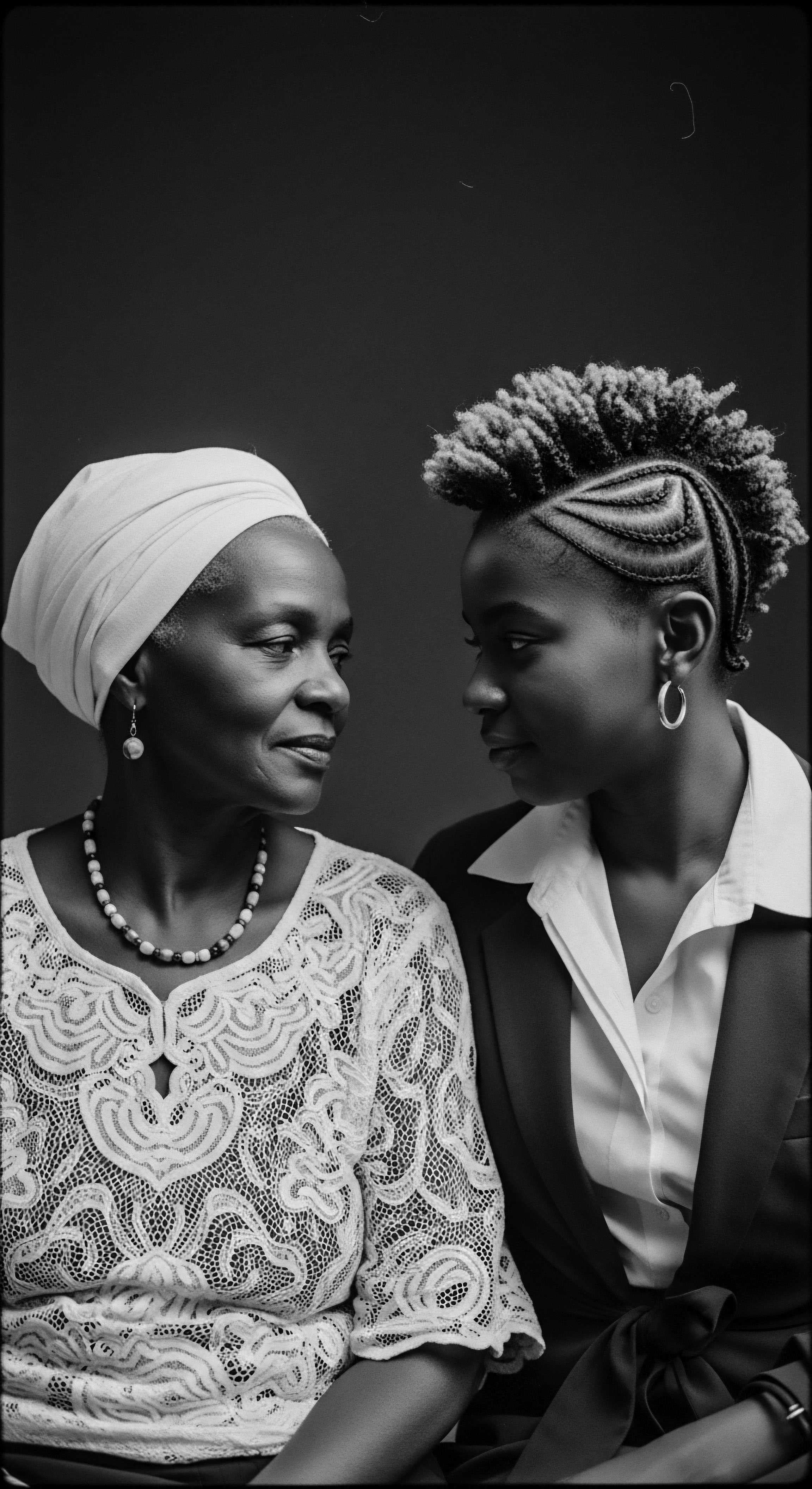
The Tender Thread ❉ Enslavement, Resistance, and Re-Signification
The period of transatlantic slavery marks a devastating yet profoundly transformative chapter in the Hair Coverings History for Black and mixed-race individuals. As noted by academic scholarship, the enforced shaving of heads upon arrival was a deliberate attempt to strip identity and cultural connection. The subsequent imposition of head coverings, often simple rags, by enslavers in the Americas was intended to dehumanize and signify a subservient status. This historical imposition is starkly captured in the 1735 South Carolina Negro Act, which restricted enslaved people to specific, cheap fabrics, aiming to visually enforce racial hierarchy.
Yet, this very act of oppression became a crucible for resistance. Enslaved women, with profound fortitude, transformed these symbols of subjugation into statements of enduring spirit. They manipulated the fabric, creating intricate ties and adornments, imbuing them with secret meanings and a quiet dignity. This re-signification of the headwrap served as a powerful counter-narrative to colonial dominance, affirming selfhood in the face of brutal dehumanization.
Consider the case of the Tignon Laws of Louisiana in the late 18th century. These laws, enacted to control the appearance of free women of color by mandating head coverings, ironically spurred a surge in elaborate and vibrant headwrap styles, adorned with jewels and feathers. This act of defiance, turning a symbol of oppression into a fashion statement of undeniable beauty and status, stands as a powerful historical example of cultural resilience.
It demonstrated that even under duress, the spirit of self-expression and cultural heritage could not be extinguished. This phenomenon is a specific historical instance that powerfully illuminates the Hair Coverings History’s connection to textured hair heritage and Black experiences.
The evolution of hair coverings for textured hair embodies a complex journey of adaptation, defiance, and enduring cultural pride.
The headwrap, in this context, also served a crucial practical purpose. It protected textured hair from the harsh conditions of labor, including sun exposure, dust, and physical abrasion, while simultaneously maintaining hair health in environments where traditional care practices were disrupted. This dual functionality—cultural expression and practical care—underscores the deep ancestral wisdom woven into these coverings.

The Unbound Helix ❉ Modern Reclamations and Global Identity
In the post-slavery era and throughout the 20th century, the headwrap continued its complex journey. While initially associated with servitude and the “Black Mammy” stereotype in some representations, leading to its abandonment by some Black women, the latter half of the century witnessed a profound reclamation. The Civil Rights Movement and the Black Power Movement of the 1960s and 70s spurred a renewed appreciation for Afrocentric aesthetics, with natural hairstyles like the Afro becoming powerful symbols of Black pride and resistance against Eurocentric beauty norms. Within this resurgence, headwraps found new life, becoming symbols of self-love, cultural allegiance, and a connection to African ancestry.
Today, the headwrap’s meaning has expanded further, representing a blend of fashion, cultural celebration, and practical hair care. Many women with textured hair use satin-lined headwraps for protective styling, safeguarding their hair from friction and moisture loss during sleep or daily activities. This contemporary application bridges ancient protective practices with modern hair science, acknowledging the unique needs of textured strands.
The continued presence of head coverings across the African diaspora, from the elaborate Gele of Nigeria worn for celebrations to the everyday Doek in South Africa, signifies a persistent cultural thread. These variations reflect regional specificities while collectively affirming a shared heritage. The meaning of these coverings is continually re-interpreted, allowing individuals to connect with their ancestral past while shaping their present and future identities.
The ongoing societal discourse around hair discrimination, particularly concerning natural and textured hair, further highlights the enduring significance of hair coverings. Laws like the CROWN Act in the United States aim to combat this bias, yet the choice to wear a head covering remains a powerful statement of self-acceptance and cultural affirmation in a world that often seeks to impose Eurocentric beauty standards. The Hair Coverings History is thus not merely a study of fabric and form, but a testament to the profound, living connection between hair, heritage, and the human spirit.
- Protection from Elements ❉ Head coverings shield delicate textured hair from environmental stressors like sun, wind, and pollution, minimizing dryness and breakage.
- Moisture Retention ❉ Materials such as satin or silk linings within headwraps aid in preserving the hair’s natural moisture, which is crucial for textured hair health.
- Style Preservation ❉ They help maintain intricate protective styles like braids and twists, extending their longevity and neatness.
- Cultural Affirmation ❉ Wearing a head covering can be a daily act of honoring ancestral practices and asserting Black and mixed-race identity.
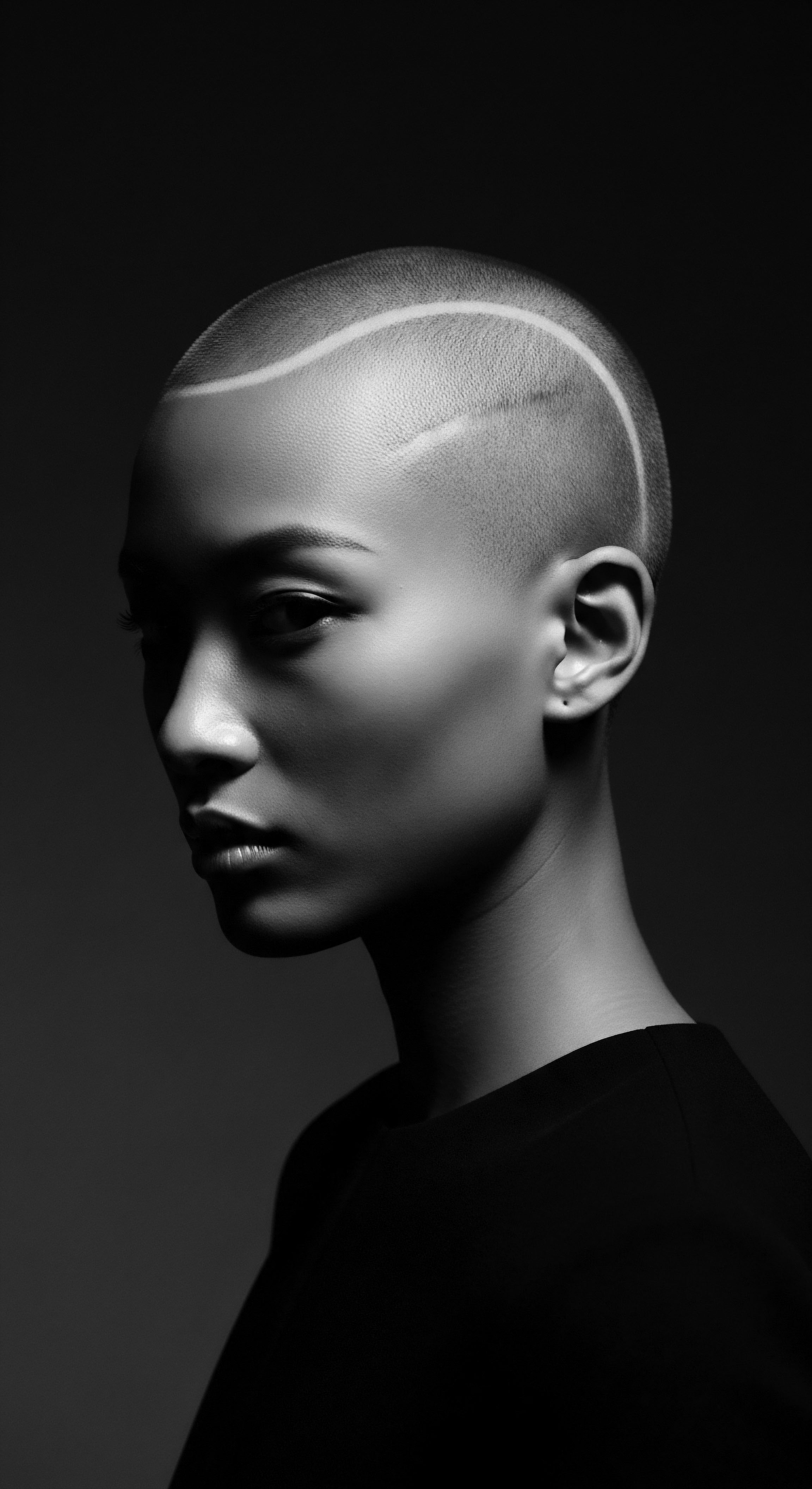
Reflection on the Heritage of Hair Coverings History
The journey through the Hair Coverings History, particularly as it intertwines with the soul of textured hair, offers a profound meditation on endurance and identity. It is a story whispered through generations, carried in the very fibers of the cloth, and etched into the memory of strands. From the vibrant ceremonial wraps of ancient Africa, signaling status and spiritual connection, to the forced kerchiefs of the enslaved, defiantly transformed into symbols of courage, and now, to the contemporary expressions of pride and self-care, the narrative of hair coverings is one of constant re-creation. It speaks to the remarkable capacity of humanity to find meaning, beauty, and strength even amidst the most challenging circumstances.
This living archive, housed within Roothea’s ‘living library,’ serves as a poignant reminder that hair is never merely an anatomical feature. For those with textured hair, it is a lineage, a chronicle of resilience, and a canvas for self-determination. The historical acts of covering, adorning, and reclaiming hair are not relics of a distant past; they are vibrant echoes in the present, informing contemporary choices about hair care, style, and personal expression.
Each twist of a headwrap, each carefully chosen fabric, connects the wearer to a continuum of ancestral wisdom and a collective heritage that celebrates the unique beauty of Black and mixed-race hair. It is a testament to the power of cultural memory, perpetually unfolding.
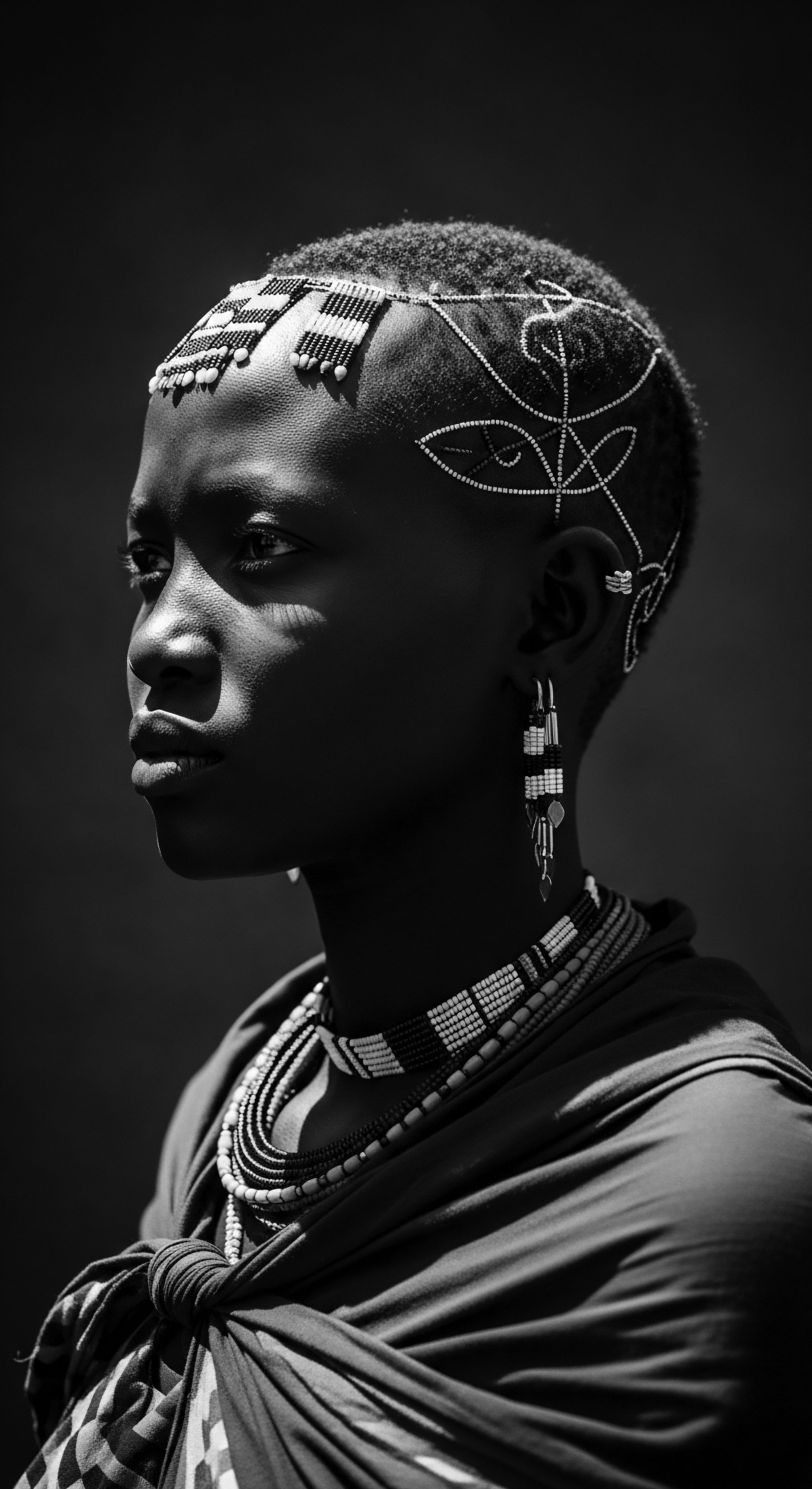
References
- Botkin, B. A. (1941). Slave Narratives ❉ A Folk History of Slavery in the United States From Interviews with Former Slaves. Federal Writers’ Project.
- Delaney, C. (1994). Untangling the Meanings of Hair in Turkish Society. Anthropological Quarterly, 67(4), 159-172.
- Goode, G. (1990). Nineteenth-Century African American Women Ministers. (Doctoral dissertation).
- Llewellyn-Jones, L. (2003). Aphrodite’s Tortoise ❉ The Veiled Woman of Ancient Greece. Classical Press of Wales.
- Payne, P. B. (2009). Man and Woman, One in Christ ❉ An Exegetical and Theological Study of Key Pauline Texts on Women in Ministry. Zondervan.
- Rawick, G. P. (1972). The American Slave ❉ A Composite Autobiography. Greenwood Publishing Company.
- Skeehan, D. (2018). The Georgian Figure ❉ Aesthetics, Gender, and the Mind’s Eye. Johns Hopkins University Press.
- Synnott, A. (1987). Shame and Glory ❉ A Sociology of Hair. British Journal of Sociology, 38(3), 381-413.
- Wares, L. (1981). African-American Dress and Adornment ❉ A Cultural Perspective. Wiley.
- Watson, F. (2009). Paul and the Corinthians ❉ The Life and Letters of a Christian Apostle. Baker Academic.
